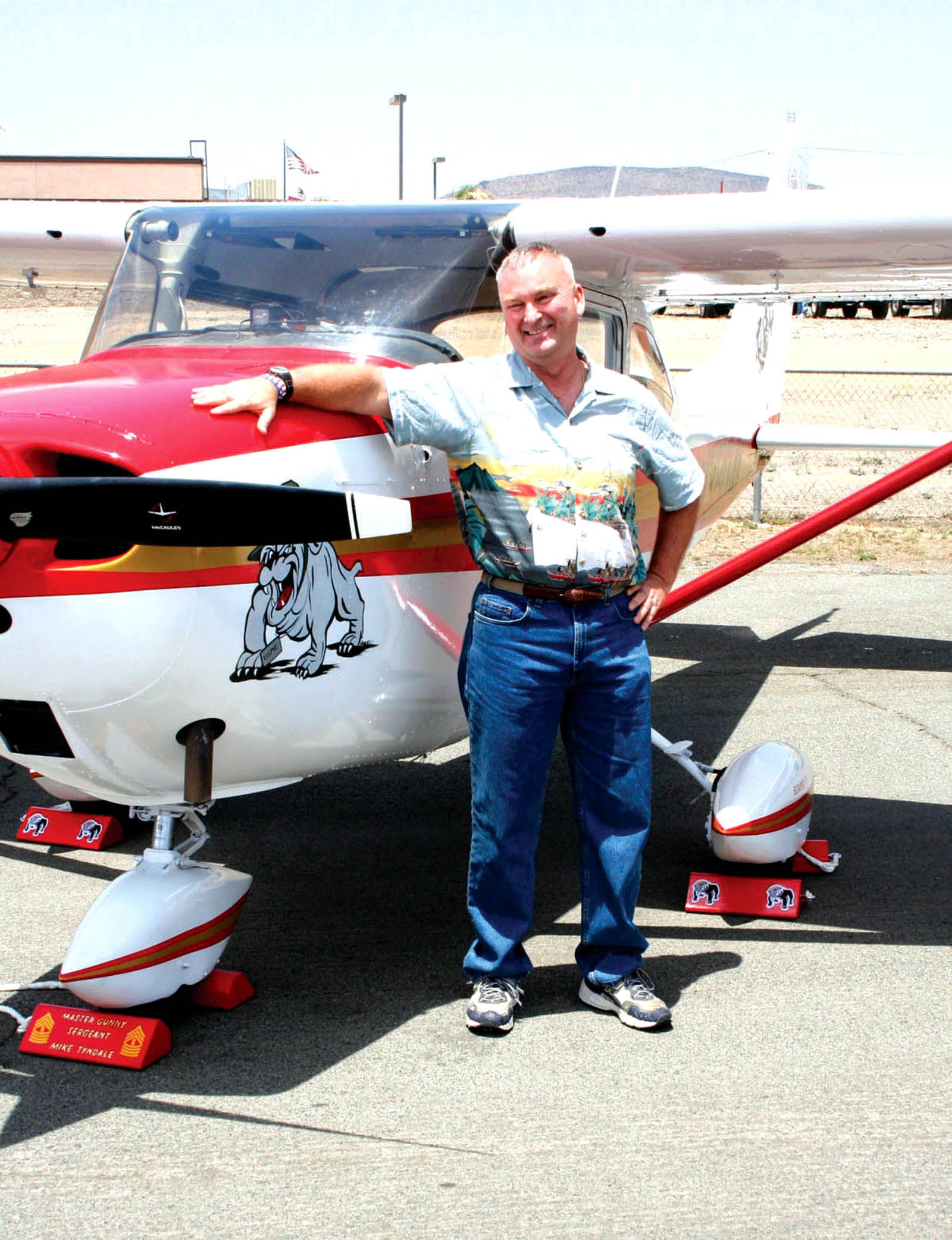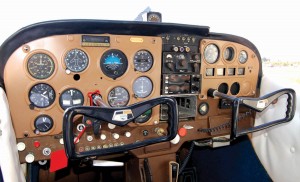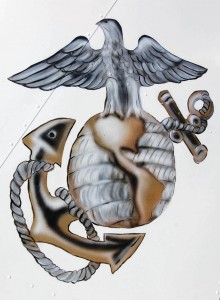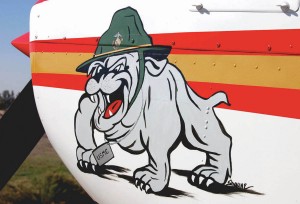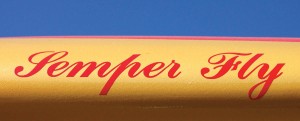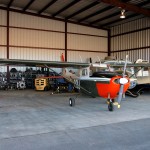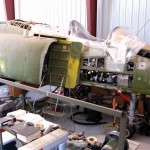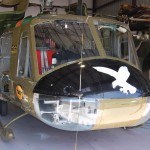
Master Gunnery Sgt. Mike Tyndale had a big smile on his face when he first saw his newly refurbished Cessna Skyhawk.
By Bob Shane
Sometime back in January 2006, Dave Barron, a member of Wings and Rotors Air Museum, noticed a derelict-looking Cessna 172 Skyhawk tied down at French Valley Airport (F70) in Murrieta, Calif. The light aircraft, built in the 1960s, was in urgent need of a considerable amount of TLC. The sun and the elements had faded its paint and baked the interior. Held together with rusted fasteners, leaking oil and sitting on flat tires, the forlorn Cessna was relegated to a residence inhabited by local birds, which built their nest under a fairing covering the right wing root.
“In May 2006, I started making telephone calls, trying to locate the owner of the ailing 172,” said Barron.
Six months later, he finally got a call back. The aircraft belonged to Master Gunnery Sgt. Mike Tyndale, an active duty serviceman in the U.S. Marines. Tyndale had completed a tour in Iraq, and because of his military service, had to leave his aircraft behind. The plane had been sitting idle for nearly five years. Barron further learned that Tyndale had no interest in selling it and had saved $1,100 for its restoration.
Barron shared what he had discovered with the other members of the museum, and they overwhelmingly decided to help this career Marine, with more than 27 years of military service, bring his Cessna Skyhawk back to life. It was a perfect opportunity for the museum staff to show its appreciation and support for American troops.
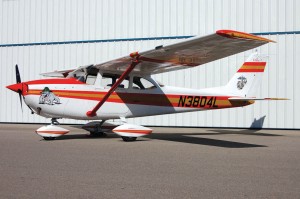
The Cessna’s new paint job includes the red and gold colors, insignia and motto of the U.S. Marines.
Barron got back to Tyndale, telling him that the museum staff had aviation experience and the licensed mechanics and the facilities to get his plane back in shape. Barron then asked if the museum could make the plane its project.
Tyndale took Barron up on his proposal and immediately offered the money he had saved for the plane’s restoration. Barron declined Tyndale’s money, and “Operation Semper Fly” was born.
After obtaining Tyndale’s keys and logbooks, the major renovation commenced in August 2006. Following a trip to the wash rack, workers stripped all panels and removed the interior. Once suppliers found out about the project, they donated many of the parts needed for the refurbishment. Concord Batteries donated a battery; Michelin replaced the tires and brakes; and Aeropropeller, of Hemet, Calif., overhauled the Cessna’s nicked prop. Continental Engine provided new mags and wire harnesses and Aviall donated spark plugs. Mechanics installed an intercom and replaced the altimeter, radio and other unserviceable instruments.
The plane now boasts new floor panels, reupholstered seats and new carpeting, and has new paint, both inside and out. The pristine white Cessna is trimmed in the red and gold colors of the Marine Corps. Emblazoned on the tail is the Marine Corps insignia. “Chesty” the bulldog, the official USMC mascot, is proudly displayed on the left engine cowling. The aircraft’s wheel pants bear the motto “Semper Fi,” which means “always faithful.”
Bill Davila of Aircrafters, a former Marine and aircraft mechanic, wasn’t a museum member, but he donated his time to perform all the necessary inspections and clean up the logbooks. His knowledge and ability were pivotal, since he could legally sign off on the completed work.
The efforts of museum members added an estimated $32,000 in value to Tyndale’s Cessna 172, based on the amount of volunteer labor and the cost of donated parts used in the restoration project. With so many companies and talented people joining the cause, Operation Semper Fly was a great success. An entire aviation community embraced the project; many people involved had family members in the military.
Now that Tyndale’s aircraft has been brought back to life, a flight instructor is donating his time to get the Marine once again pilot-qualified, by helping him pass his biennial flight review.
While the airplane was undergoing renovation, Tyndale was like a child waiting for Christmas, and Christmas did indeed come early for him this year. On June 9, 2007, at French Valley Airport’s open house, attended by the mayor of Murrieta, volunteers removed the red, white and blue parachute canopy covering the airplane and officially unveiled the like-new Cessna. Barron, representing the museum, made a brief speech and handed Tyndale the keys to his airplane.
“Usually, the most a returning serviceman can expect is, ‘Welcome home; thank you for your service,’ and a handshake,” said Tyndale.
The museum staff had clearly gone “above and beyond,” following George Washington’s guidance that’s quoted on the museum website: “The willingness with which our young people are likely to serve in any war, no matter how justified, shall be directly proportional as to how they perceive the veterans of earlier wars were treated and appreciated by their nation.”
“Restoring Tyndale’s airplane to airworthy status was a symbol of our gratitude, not only to him, but to all service members and their families,” Barron said. “As citizens, we understand the difficulties members of the military and their families have gone through, particularly those that have been called upon to serve multiple deployments in a war zone.”
Museum members who helped to make the restoration a reality included Dave Barron, Shayne Meder, Pat Rodgers, Rick Rybarczyk, Scott Donnell, Roxane Johnson, Van Ferry, Craig Clary, Bob Szymanski, Chase Meder, Frank Tresenrider, Steve Roberts, Paula Woods and Mark Kennard.
The Wings and Rotors Air Museum is a flying museum; its staff works on fixed wing aircraft and helicopters, with the intention of restoring them to flying condition. Two hangars house its aircraft collection, which includes a Bell UH-1B Huey. The Huey has been restored to its original combat configuration and painted in the markings of the 118th Assault Helicopter Company, Third Platoon “Bandits,” which operated out of Bien Hoa, Vietnam, in 1965. During its restoration in 2003, workers discovered 14 bullet holes.
Perhaps the museum’s most ambitious project is its F-4H Phantom II. So far, workers have installed new fuel, oil and hydraulic lines, as well as new wiring. Wing repairs are currently underway. The former military jet fighter could make its first flight within a year.
Many talk about supporting the troops, but the staff of Wings and Rotors Air Museum is doing something about it. Its gesture has certainly helped one Marine count himself among the few and the proud.
For more information about Wings and Rotors Air Museum, visit [http://www.wingsandrotors.org].
- The USMC motto, “Semper Fi,” is painted on the aircraft’s wheel pants.
- Museum staff members Shayne Meder (left), who painted the 172, and Pat Rodgers, the executive director, both helped restore the Cessna Skyhawk.
- The museum’s T-41 is in flyable condition.
- This F-4H Phantom II is being restored.
- This UH-1B Huey is a veteran of the Vietnam War.
- The museum’s TH-55 Osage is currently in restoration.











